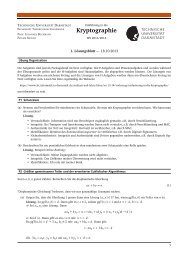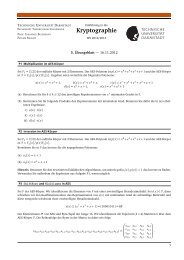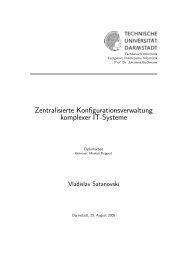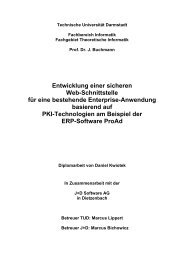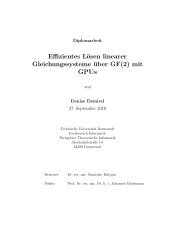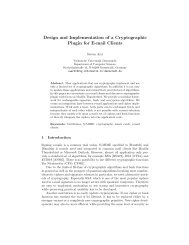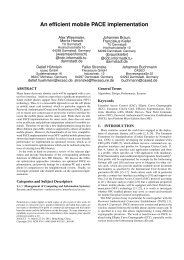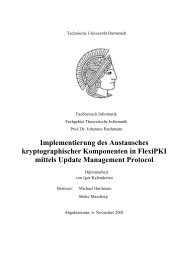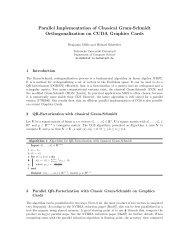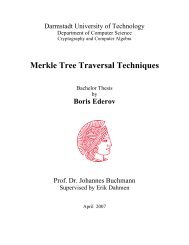Lattice Basis Reduction in Infinity Norm - Technische Universität ...
Lattice Basis Reduction in Infinity Norm - Technische Universität ...
Lattice Basis Reduction in Infinity Norm - Technische Universität ...
Create successful ePaper yourself
Turn your PDF publications into a flip-book with our unique Google optimized e-Paper software.
and new Euclidean norm algorithm that works very well <strong>in</strong> practice - the<br />
Block-Kork<strong>in</strong>e-Zolotarev algorithm or BKZ-algorithm.<br />
Kaib and Schnorr [4] [2] developed recently the Generalized Gauss Algorithm<br />
for the reduction of two dimensional lattice bases with respect to<br />
the arbitrary norm and obta<strong>in</strong>ed a universally sharp upper bound on the<br />
number of its iterations for all norms. Lovász and Scarf [8] created the LS<br />
algorithm that is <strong>in</strong> a way an extension of the LLL-algorithm to an arbitrary<br />
norm. Kaib and Ritter [3] generalized the strong and efficient concept of<br />
block reduction.<br />
This paper beg<strong>in</strong>s with an <strong>in</strong>troduction <strong>in</strong>to the basic mathematical background<br />
so that the reader could follow the idea beh<strong>in</strong>d the reduction theory<br />
easily. It is then divided <strong>in</strong>to three ma<strong>in</strong> parts, one for each of the three<br />
most important algorithms - Gauss, LLL and BKZ. Each of the three parts<br />
presents first the orig<strong>in</strong>al concept with respect to the Euclidean norm, then<br />
their extension to an arbitrary norm and particularly to the <strong>in</strong>f<strong>in</strong>ity norm.<br />
Each of the sections is concluded with an analysis of the complexity of the<br />
algorithms with respect to l∞-norm.<br />
2





